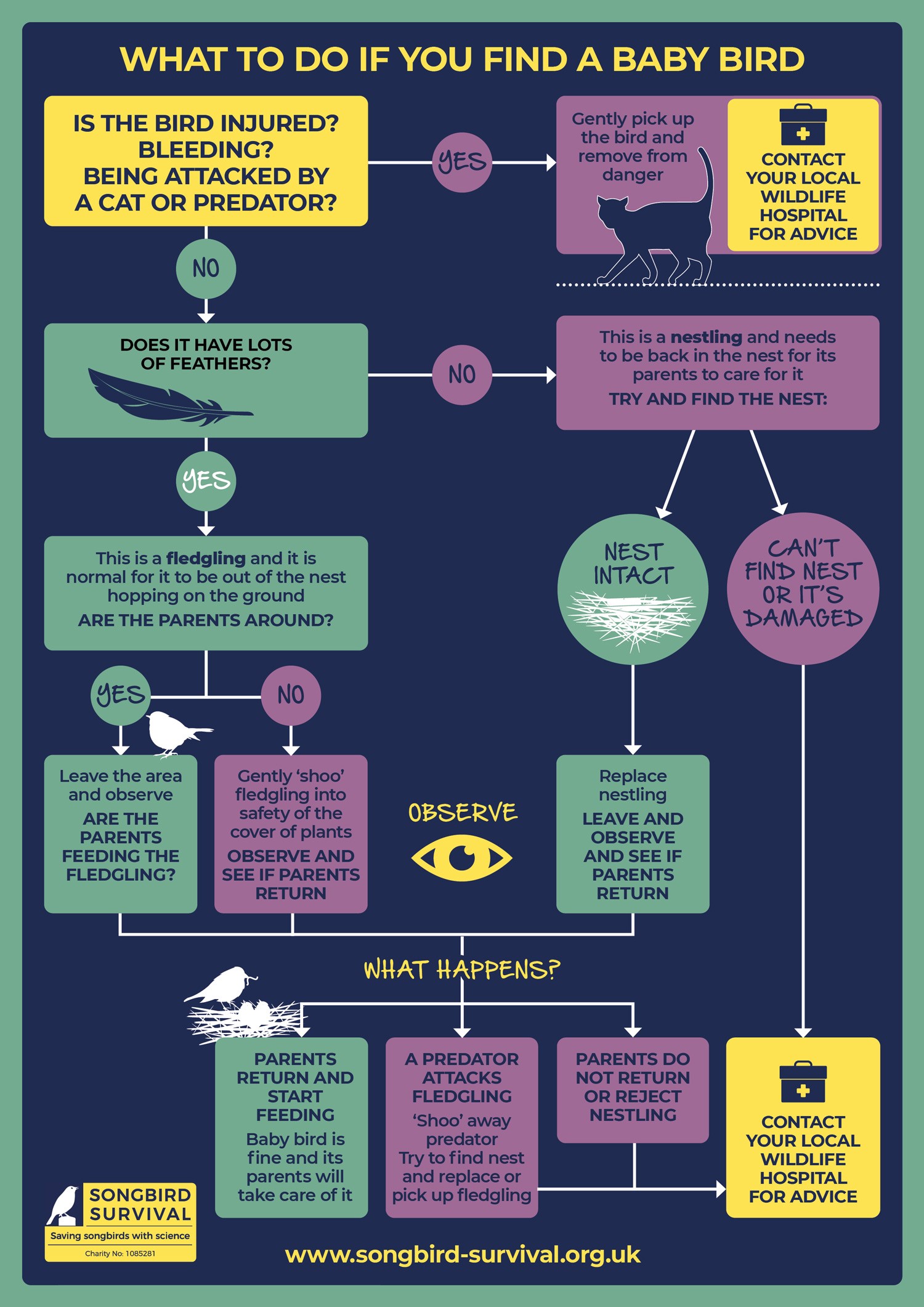
Observing the bird is the priority as a first step.
In many cases the bird will be fine without intervention. For many fledglings, its parent will likely be nearby and encouraging it to become independent. But, nestlings and injured birds may benefit from your support to protect them.
Follow the steps in our flow chart to decide on the best course of action.

Keep any intervention to a minimum by following our step by step guide
Keep surrounding areas free of potential predators, particularly cats - keep your cat indoors where possible during this vulnerable season for baby birds
If you do need to handle a bird, wear gloves and maintain minimum contact to minimise stress for the bird
Don’t try to feed and look after baby birds yourself – this needs specialist experience of a wildlife rehabilitator
Learn to spot the difference between a nestling and a fledgling so you are ready to take the best course of action.

A nestling will be small.
Very young birds may not have their eyes open and the will have few feathers or be bald.
They cannot fly.

Fledglings may be similar in appearance to an adult bird but may be just slightly smaller and their tail and wing feathers may be shorter.
They can fly, even if just for short distances.
For a few days after leaving the nest, their parents will still feed them.
We would love to hear your stories of how you have rescued a baby songbird!
email us on: dawn-chorus@songbird-survival.org.uk
We need your help to fund our crucial independent research and work.
Join our community and receive our exclusive membership benefits.
Receive our monthly e-news and regular updates